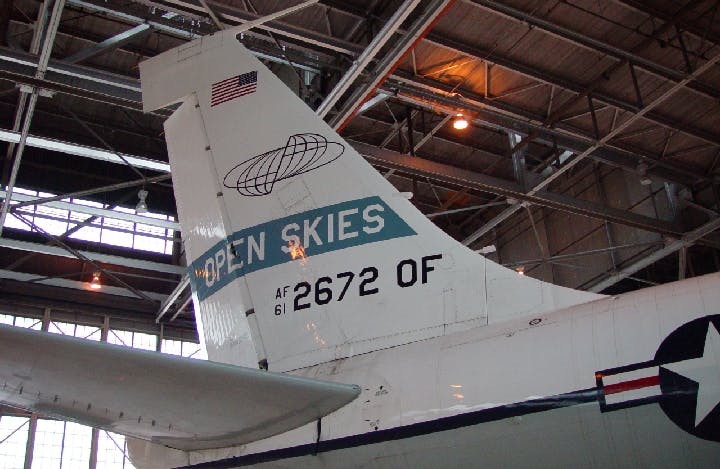Summer 2021
Closing the Open Skies
– Katarina Kertysova
U.S. withdrawal and a looming Russian exit seem to spell doom for a landmark treaty. Can this unique instrument of military cooperation be preserved?
When people think of arms control, it is weapons of mass destruction that typically come to mind. This is natural, given the immense human suffering that has been caused by nuclear, chemical, and biological weapons to date.
Yet, apart from occasional incidents involving chemical agents – most recently in Syria and the UK – all wars since 1945 have been fought with conventional weapons. An observation made by Jozef Goldblat in 1982 still holds true today: “an escalating conventional conflict is more likely to trigger a nuclear war than a deliberate surprise attack with nuclear weapons alone.”
Arms control regimes, in general, are not widely known to the public. In particular, agreements covering conventional weapons are esoteric, and do not receive the attention they deserve.
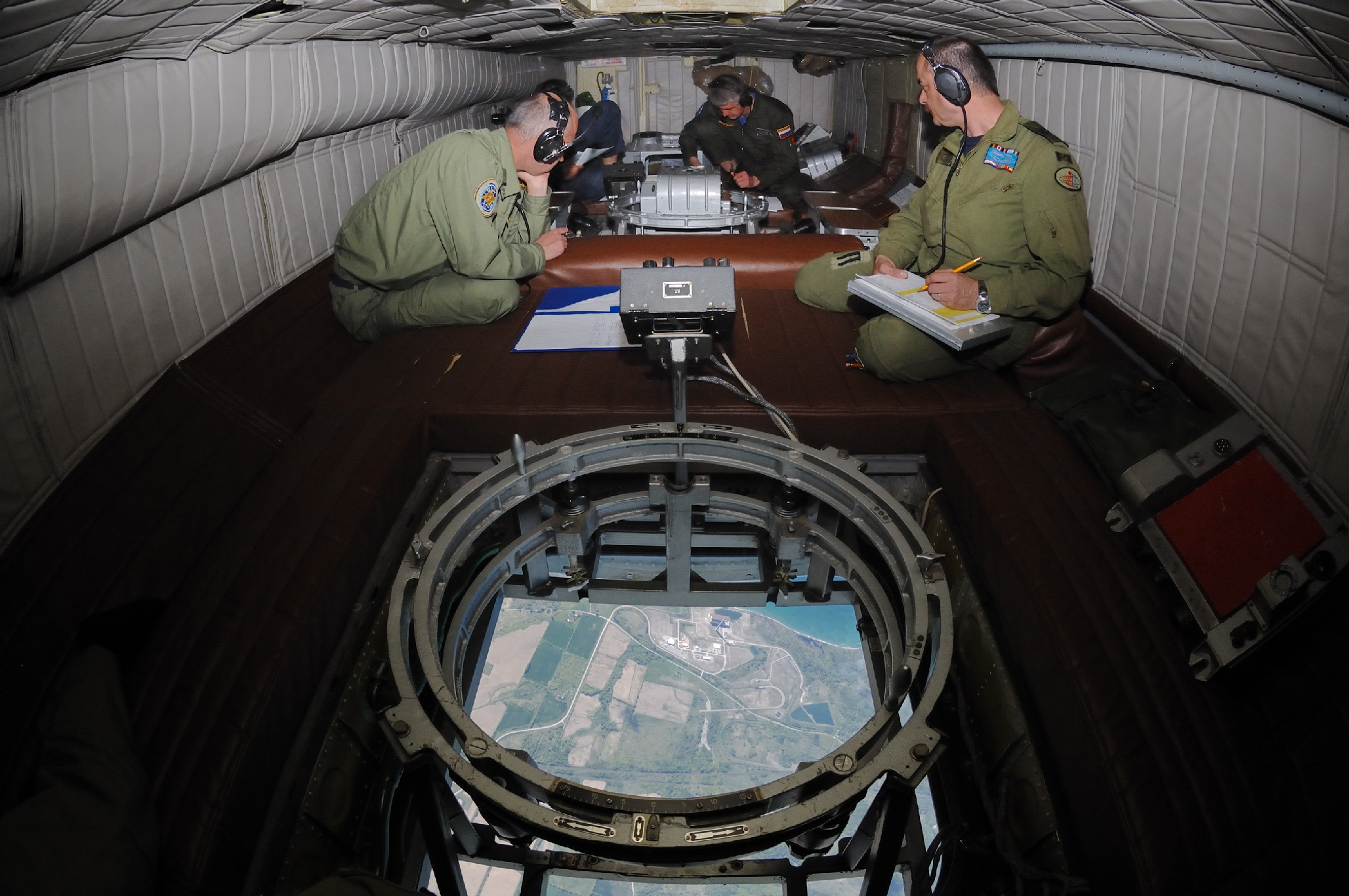
When the Cold War came to an end, both sides of the East-West divide used that unique moment to negotiate a triad of conventional arms control agreements that aimed to “contribute to reducing the dangers of armed conflict and of misunderstanding and miscalculation of military activities” in Europe. This regime comprises two treaties – the Treaty on Conventional Armed Forces in Europe (CFE, 1990) and the Open Skies Treaty (OST, 1992) – and one political agreement, the Vienna Document (VD, 1990).
Thirty years on, however, this conventional arms control regime is in disarray. The CFE Treaty, once a cornerstone of European security, reached a political dead-end when Moscow suspended its compliance in 2007. The Vienna Document’s provisions are outdated and in need of revision since 2011. The future of the Open Skies Treaty – the mutual air reconaissance pact that is the last functioning pillar of this conventional arms control architecture – is under severe threat, with the U.S. withdrawal from the treaty in November 2020 now matched by Russia’s decision to formally exit the agreement in December 2021.
How did we get to this point? What do the remaining state parties stand to lose if the treaty falls apart? Can the existing regime be preserved without Washington’s and Moscow’s participation? What does the future hold for cooperative aerial monitoring?
Taking Off
The concept of mutual aerial reconnaissance was first proposed by U.S. President Dwight Eisenhower in the 1950s to lay bare the Soviet Union’s military activities and test its seriousness about disarmament. It was rejected by the USSR at that time, only to be revived at the end of the Cold War in 1989 by President George H. W. Bush. This time, the USSR agreed to the negotiations.
What was initially conceived as a bilateral U.S.-USSR initiative was enlarged into a multilateral agreement that would involve all members of NATO and the former Warsaw Pact. The Open Skies Treaty was signed in 1992 and, following a lengthy ratification process, it entered into force in 2002 with 34 members in Europe and North America.
Confidence-building and increased transparency about military activities are at the heart of the agreement. On the basis of fixed active and passive observation flight quotas, which are distributed annually, the treaty allows its members to conduct unarmed, short-notice observation flights over the territory of other state parties, using agreed-upon sensors and aircraft. These overflights allow the collection of basic information on military forces and activities, as well as to monitor civilian and military infrastructure, such as roads, airports, railway lines, and industrial plants. Open Skies overflights can be used for any other purpose as well.
For two decades that the treaty has been in force, member states have conducted more than 1,500 Open Skies overflights, with an average of 100 observation flights being carried out each year. The increased military transparency and predictability has helped build trust and confidence that none of the parties is preparing for war or a surprise attack, and has enhanced mutual understanding among member states.
What was initially conceived as a bilateral U.S.-USSR initiative was enlarged into a multilateral agreement that would involve all members of NATO and the former Warsaw Pact.
A direct human interaction may be the greatest value added of this multilateral agreement. During overflights, representatives of both states – observing and observed – fly in the same aircraft. As such, military officers from different states, particularly NATO member states and Russia, engage with each other on a regular basis. This direct interaction among state parties cannot occur through satellites or UAV technology.
The Open Skies Treaty also empowers smaller states in the agreement. While larger state parties possess satellite capabilities, and are able to gather imagery intelligence, smaller states are particularly reliant on Open Skies aerial imagery to collect information on military activities of other state parties. Under the terms of the treaty, member states can request images from overflights conducted by others on a cost-recovery basis. Thus, the treaty levels the intelligence playing field. And in an era of sophisticated digital manipulation, Open Skies flights provide tamper-proof imagery and evidence of possible violations to all member states.
Disputed Compliance
Despite these clear benefits, the last few years have been marked by mutual U.S.-Russian accusations and counteraccusations regarding treaty violations. They bear closer examination.
Under the treaty, observation flights are allowed over the entirety of state parties’ territories, meaning that a host nation cannot declare any part of its territory off-limits. The U.S. accused Russia of violating this provision in two instances.
The first instance concerns restricted access for Open Skies flights over the Russian exclave of Kaliningrad. A Polish overflight there in 2014, which allegedly took an unusually long back-and-forth route over the small territory, led Russia to restrict the overflight distance for any mission to 500 kilometers. Russia cited concerns over the safety of civilian air traffic. In response, the U.S. imposed flight restrictions for Russia over Hawaii and Alaska’s Aleutian Islands.

Overflights of Russian territory bordering Georgia’s breakaway regions of South Ossetia and Abkhazia also sparked disagreements. Russia recognized the two regions as independent states in 2008, and began to refuse Open Skies missions over its territory contiguous with these two breakaway regions in 2010. Russia claimed that South Ossetia and Abkhazia were non-state-parties and that the treaty prohibits flights closer than 10 kilometers from their borders. In response, Georgia formally suspended Russia’s right to observe its territory in April 2012.
This dispute culminated in 2018, when no Open Skies flights were carried out altogether, because of the inability of the two state parties to agree to the distribution of quotas.
Russia compiled its own list of grievances concerning treaty implementation by the U.S. and NATO, as well as by Ukraine and Georgia. In addition to the aforementioned restrictions placed by the U.S. on observation flights over Alaska and Hawaii, the Kremlin also complained about visa issuance delays for the designated Russian personnel, the allowed number of stop-overs, and the maximum flight distance or altitude restrictions imposed by other state parties. Because NATO members do not conduct observation flights over each other’s territory, Russia also voiced its concerns about the limited repository of images it can request as a state party to the treaty.
Tracking the U.S. Withdrawal
Before President Donald Trump took office, non-compliance issues were dealt with through diplomatic channels, within the Open Skies Consultative Commission (OSCC), which facilitates the implementation of the provisions of the treaty, and progress was being made on resolving them.
Then, in May 2020, the Trump administration announced the U.S. intention to withdraw from the Open Skies Treaty. Secretary of State Mike Pompeo declared that the move was due to Russia “flagrantly and continuously” violating the treaty.
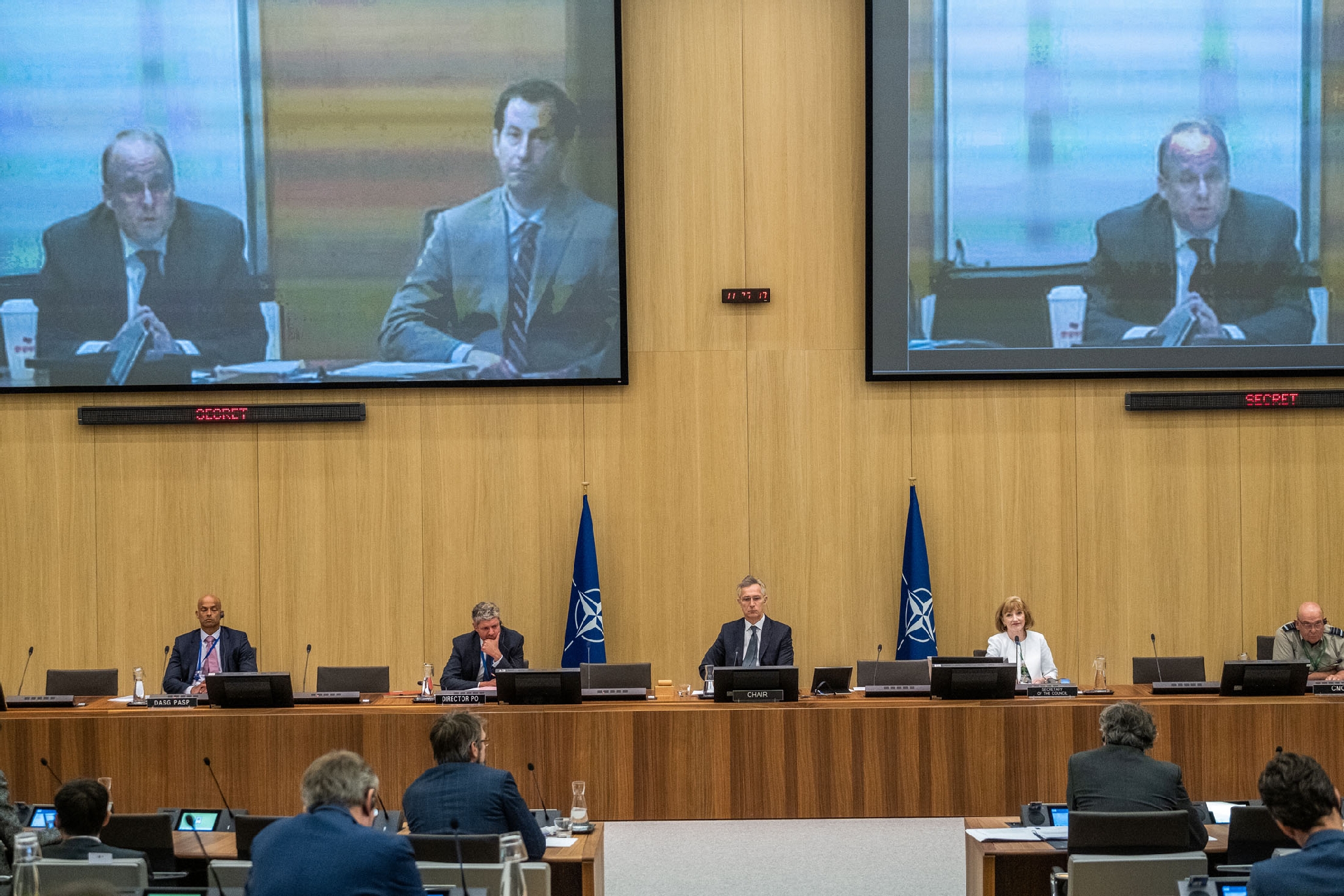
In addition, the Trump administration presented the treaty as unnecessary (citing superiority of U.S. satellite images over those taken by Open Skies) and threatening (Russia’s systematic overflights over critical national infrastructure were considered to pose “an unacceptable risk to [U.S.] national security”). The withdrawal took effect in November 2020.
When Joseph Biden won the U.S. presidential election in November 2020, hopes were high that the U.S. would rejoin the agreement. Biden had supported the treaty as a U.S. Senator, and as a presidential candidate, he was highly critical of Trump’s withdrawal decision. Biden’s stated position was that leaving Open Skies would “exacerbate growing tensions between the West and Russia, and increase the risks of miscalculation and conflict.”
In the months following the election and the U.S. withdrawal, there was a legal debate in the U.S. about whether and how it could rejoin the treaty under the new administration. The U.S. withdrawal was also reviewed during the first Biden-Putin call in January 2021.
A direct human interaction may be the greatest value added of this multilateral agreement. During overflights, representatives of both states – observing and observed – fly in the same aircraft.
However, in a diplomatic memo released on March 31, 2021, the U.S. State Department told its partners that rejoining the treaty would send the “wrong message” to Russia and “undermine [the U.S.] position on the broader arms control agenda.” A few days later, on April 3, 2021, the U.S. Air Force confirmed its plans to retire two Boeing OC-135B observation planes, previously used for overflight missions, and send them to a remote aircraft boneyard in Arizona. As Russia put the withdrawal wheels in motion, and the U.S. Senate remained split on this issue, on May 27, 2021, the Biden administration informed Russia that the U.S. would not rejoin the treaty.
Russia Prepares Its Exit
American participation was key to Russia’s interest in the treaty in the first place. First, the U.S. withdrawal in November 2020 put an immediate end to Russian observation flights over U.S. territory. This sounds dire, but in practice, these flights constituted only 14 percent of Russia’s total treaty flights. The remainder of Russian overflights went over other European states and Canada. Despite the U.S. withdrawal, observation flights over U.S. military bases in Europe remained a possibility.
Second, Russian officials were concerned that even after the American departure, America’s European NATO allies and Canada would continue to share images collected during observation flights over Russia with the U.S.
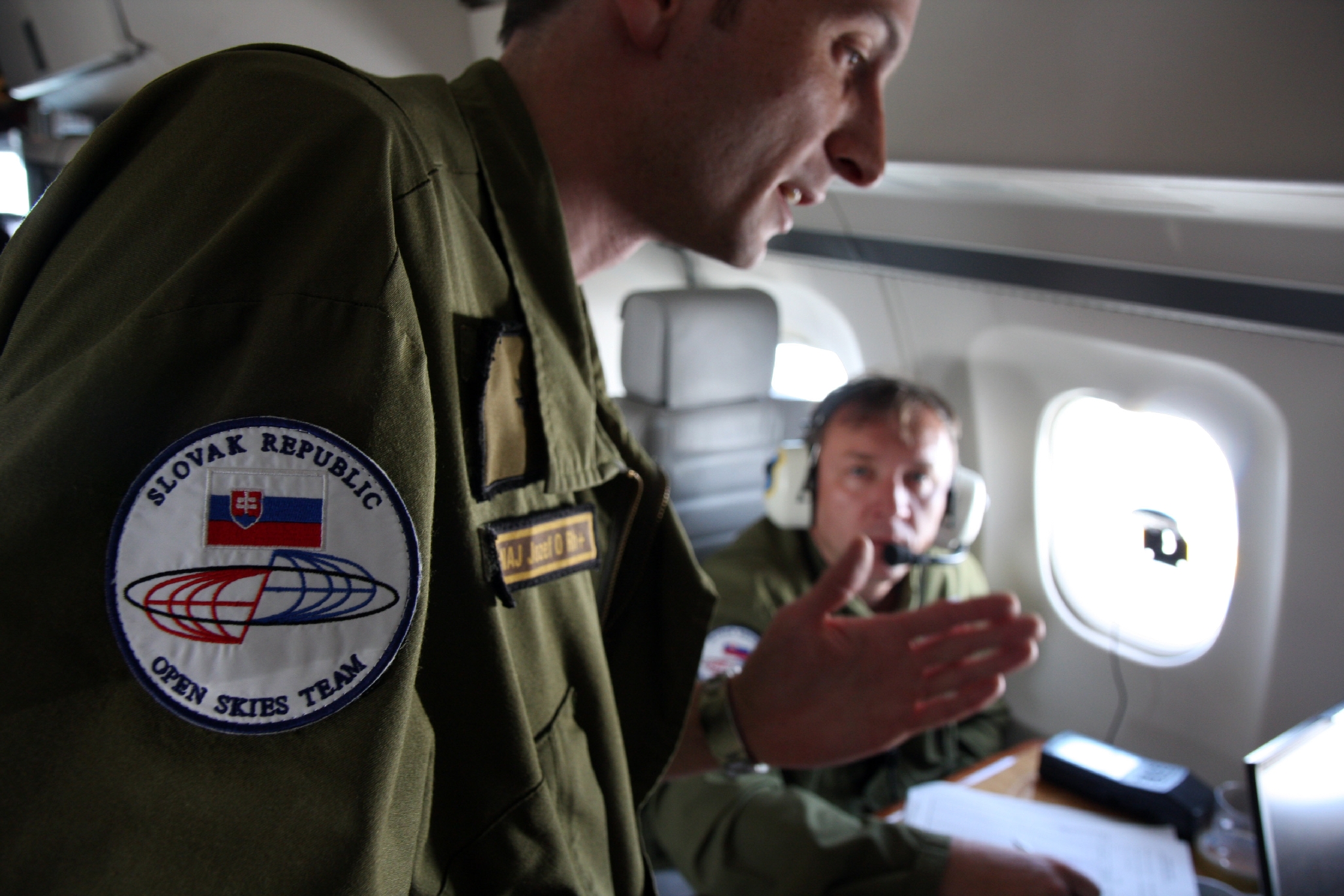
When reports of a possible U.S. withdrawal first surfaced in October 2019, Russian leaders appeared to rule out a tit-for-tat response. But the combination of a formal U.S. exit a year later (in November 2020), and other state parties’ refusal to reiterate their commitment not to share Open Skies imagery with third parties in a separate statement or agreement changed Russia’s stance. On January 15, 2021, just before President Biden’s inauguration, the Russian Foreign Ministry announced that it would begin its own domestic process to withdraw from the Open Skies Treaty.
Russian diplomats did indicate that the decision could be rescinded if the U.S. sent a clear signal it intended to return to the treaty. When no such signal came, Russia’s President Vladimir Putin signed a law on June 7, 2021 that formalized Russia’s exit from the treaty. When the new law passed both the State Duma and the Federation Council, Russia notified all state parties of its decision to withdraw on June 18, 2021. The mandatory six-month notice required by the treaty means that Russia’s official withdrawal will take effect on December 18, 2021.
A Way Forward
The U.S. and Russian withdrawal need not signal the end of the Open Skies Treaty. The remaining state parties to the agreement can (and should) keep the treaty alive and continue its implementation.
Even without the participation of Russia (and Belarus), there is ongoing value in overflying Ukraine, Georgia, and Bosnia and Herzegovina. These three countries alone received more than 40 percent of all active quota flights performed by European member states and Canada.
Preserving the treaty would also enable the remaining members to conduct extraordinary observation flights as a mechanism of conflict prevention and crisis management. These overflights proved important not only to monitor fighting in eastern Ukraine in 2014, as well as the 2018 Kerch Strait hostage crisis, but also to debunk disinformation surrounding these events. The ability to maintain such imagery coverage of potential geopolitical flashpoints remains highly relevant from a European perspective.

Yet despite these benefits, interest in saving the Open Skies Treaty varies among its remaining state parties. States such as Portugal, Georgia or the Baltic states rarely conduct any overflights. The future participation of Belarus, which forms one state party with Russia under the treaty and does not have its own equipment to fly, remains unclear.
As Alexander Graef observes, Ukraine matters the most since it is a major recipient of overflights and also operates a fully equipped aircraft. “If Ukraine remains committed to the Treaty, there is a good chance that the state parties can save it for now,” Graef adds.
On July 20, 2021, Canada and Hungary, as Open Skies Treaty depositories, convened a Conference of State Parties to discuss the Russian decision and its consequences for the agreement. The conference provided a useful venue for the remaining members to discuss how they want to move forward.
Confidence-building and increased transparency about military activities were at the heart of the agreement.
A second option? Reimagine and repurpose the Open Skies Treaty – or apply the idea of cooperative aerial observation to other regional contexts.
Even when the treaty was being negotiated, it was already understood that Open Skies assets had uses beyond military confidence-building. As such, the remaining state parties can exercise that flexibility and extend the Open Skies regime into additional fields, including:
Assisting UN peacekeeping operations. Open Skies flights can be used to monitor buffer zones, disengagements, and conventional force postures — or perhaps even to locate refugees in conflict areas.
Supporting environmental monitoring and emergency response. With rising global temperatures, extreme weather events are gaining in amplitude and frequency. Open Skies imagery already proved useful in support of disaster relief in the aftermath of Hurricane Katrina (2005) and the Haiti earthquake (2010), as well as to track the spread of an oil spill in the Gulf of Mexico in 2010. Open Skies aircraft and sensors can certainly aid emergency responders in the future.
Verifying international arms control and future environmental agreements. Both sorts of agreements require satellite or airborne verification, and cooperative aerial monitoring regimes could be useful in this regard.
To realize the treaty’s full potential, all the permitted sensor types should be on board and new sensor capabilities introduced. These could include entirely new non-imaging sensor types, which could, for example, detect atmospheric pollution or radiation leaks.
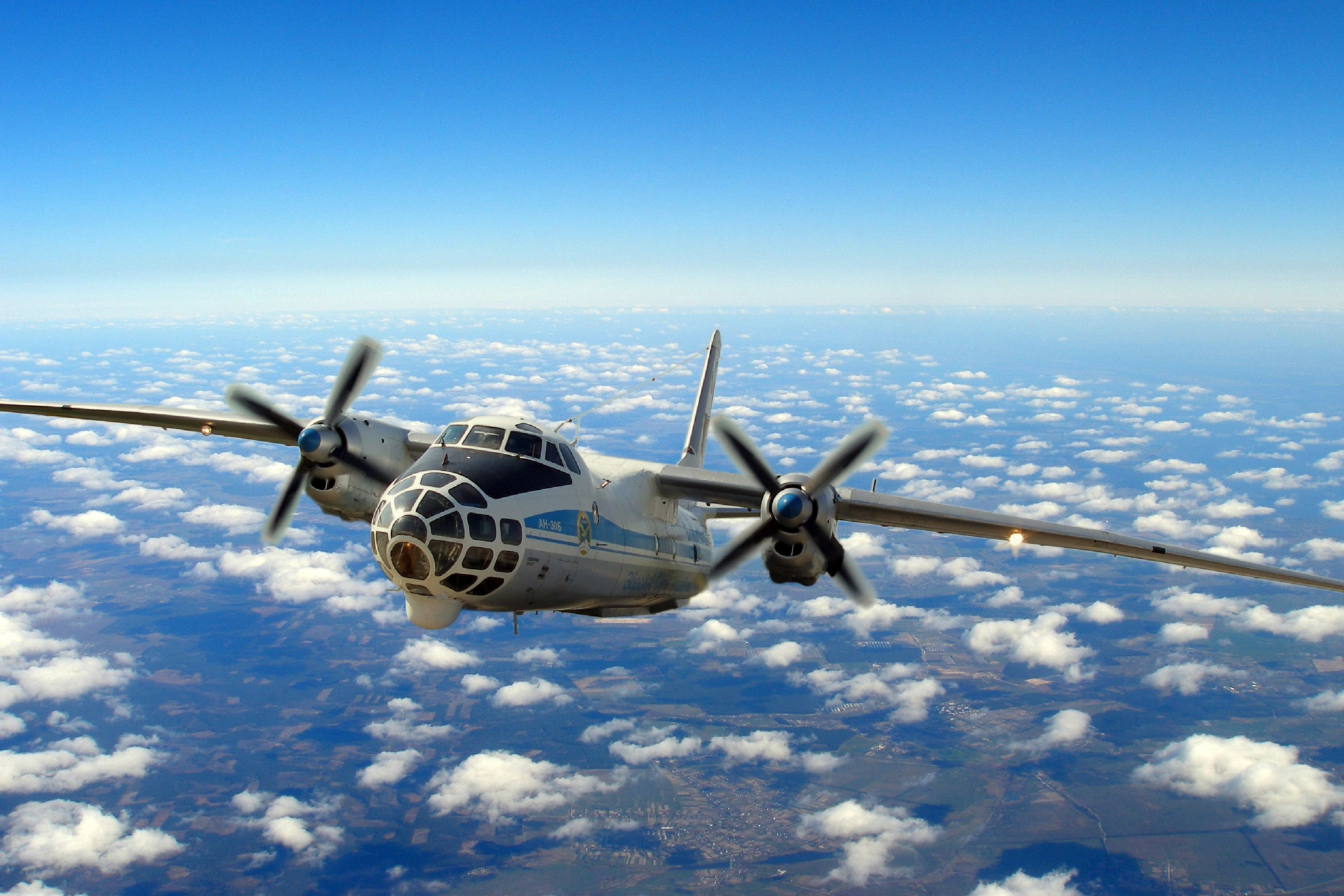
The Open Skies Treaty could expand geographically, too. Regarded primarily as a Euro-Atlantic instrument, the agreement is open, in principle, for any other state to apply to join. University of Ottawa Associate Professor Peter Jones has argued that extending the existing regime to selected Asian countries, starting with China and Japan, could help allay the growing fears of conflict in the Pacific region.
Lastly, the Open Skies idea could be applied to other regional contexts. There are multiple regions where mutual aerial observation could help to reduce tensions and stabilize politico-military relations. These include India and Pakistan, the Korean peninsula, conflict zones in the Middle East and Africa, as well as the European Arctic, which sees increasing military presence and activities from both Russia and NATO member states. In the Arctic in particular, the treaty (or another regime for aerial observation) could help address military security concerns, contribute to greater military transparency and predictability, as well as to support the monitoring and protection of the Arctic environment.
Preserving Transparency
As we ponder the potential ways forward, it is useful to recall what may be lost if the treaty falls apart.
For 20 years, the agreement has been both a unique instrument of military confidence-building and a significant source of strategically important military information, particularly for small states. It is undeniable that Russia and NATO member states cooperating together under the auspices of the Open Skies regime and subjecting themselves to high levels of military transparency has helped enhance predictability, as well as built trust and mutual understanding.

As Russia-West relations continue to sour and the risks of unintentional escalation – possibly by accident or misunderstanding – are on the rise, managing these will be even more difficult if we fail to save this important element of military-to-military cooperation or find other ways to improve transparency about military activities.
The remaining members should acknowledge the treaty’s ongoing value and relevance and consider continued implementation even without the U.S. and Russian participation.
Extending the Open Skies regime into additional fields, incorporating new technology on Open Skies aircraft, and inviting new states to join would boost the utility and scope of the existing regime. Even if the treaty in its current format collapses, the idea of cooperative aerial observation to reduce and stabilize tensions remains valid and can make a meaningful contribution to military confidence-building in other world regions (beyond Europe and North America).
Katarina Kertysova is a Policy Fellow at the European Leadership Network (ELN) and a Global Fellow at the Kennan and Polar Institutes of the Woodrow Wilson International Center for Scholars. The author is grateful to Julia Berghofer, Alexander Graef, and Andreas Persbo for their comments and review of earlier versions of this essay. Any errors and omissions are the sole responsibility of the author.
Cover photograph: The tail of an OC-135B observation aircraft used by the United States under the Open Skies Treaty during a ground inspection in May 2002. (OSCE)
